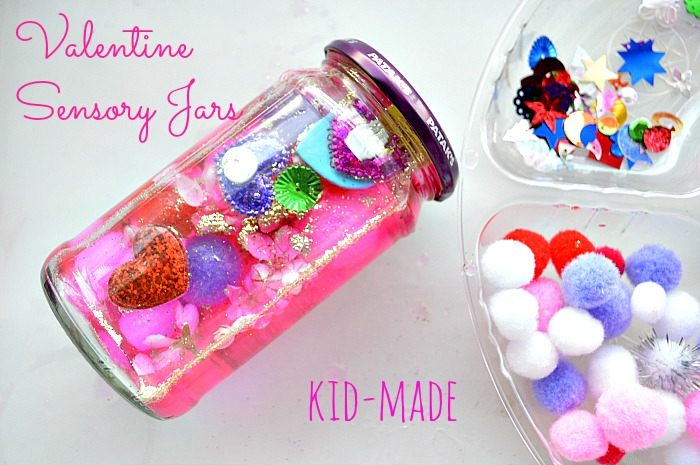
It’s time to create another set of sensory jars. I love to collect all kinds of jars. A habit I picked up from my mother , never throw away glass jars! With my stash overflowing it was time to put it to use and what’s better than showing these jars some love by making Valentine’s sebsory jars. Remember our Fall Sensory Jars and our recent Snow Jars?
Materials ( Amazon Affiliate links below )
- Empty Glass Jars
- Washable Liquid Watercolor
- Spangles
- Glitter
- Foam Hearts
- Bath Salts
- Flowers
Instead of me setting out all the materials, we made this into a collaborative process. I talked to them about making sensory jars and immediately my 5 year old had ideas about what can they go in the jars. We combined all our ideas ( including my 3 year old – her idea was GLITTER!) and set out the materials. I always try to include my children in setting up part of the activity since I think it is just as important as playing.
Since my 5 year old has already done this, when we did our fall sensory jars she knew how to make her own sensory jar using the supplies. She was pretty excited and took much pleasure to show her baby sister how it’s done. Baby sister 3 had her own ideas though.Ha!
She started off with a few drops of her favorite liquid water color and poured water into the jar. ( Try to use a container with a spout so you can have the children do this part independently) Once she got the right shade of magenta water, she went ahead and added all the fun sensory elements we had collected. She added, pom poms, puffy stickers, foam stickers and flower petals first.
It was fn for both of them to experience sink and float. Big sister was trying to push the pom poms down and delighted in seeing them pop up and float on top. She played with a straw and was squishing the pom poms and mixing the solution and generally playing ” concoctions” { We did a similar activity last spring – Spring Potions“}
It was the perfect opportunity when she brought up floating and sinking. Baby 3 chimed with the same concept much to my surprise (!) she learned at school. They personally saw the pom poms and foam sticker float up and the spangles sink to the bottom of the Valentine’s sensory jar.
After much stirring of the straws, jar was allowed to rest. Why? to add glitter ofcourse! No respectable glitter lover will make a pink Valentine’s sensory jar with glitter!
There, we added silver and gold glitter and even a couple of pinches of bath salts.
It was a very engaging sensory activity for the children. The best part was where we went around the house collecting all the things that can go into the Valentine’s sensory jars.
They will look great perched atop your mantle or any place you deem safe. You can easily avoid the glass and create the same sensory jars with any other jar/bottle you think are safe for your household. I always observe that if the *children create* something by themselves they are generally not destructive with those objects because they take ownership and pride in their work. Well if I had made say a jar candle, then that’s a whole different story since I need to really keep them safe.
A simple jar with just a few elements
Feel free to pin this image
Some wonderful collaborative e-books we have released!
A book filled with playful science and math activities
Check out our resourceful e-book filled with many preschool play ideas.
We have also collaborated on another e-book with simple and practical baby play ideas.

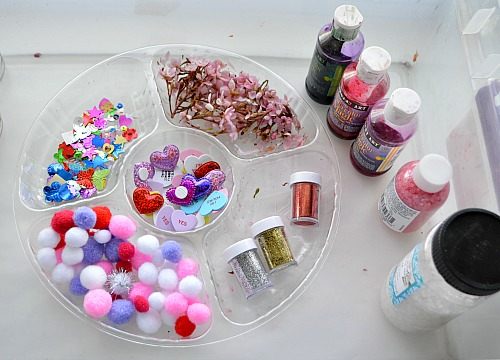
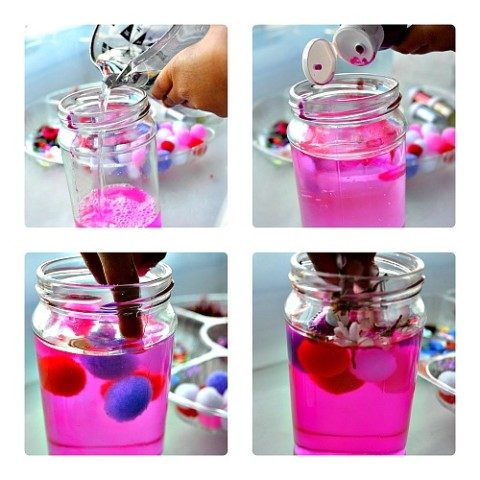
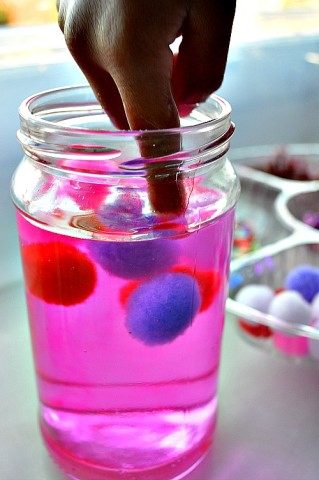
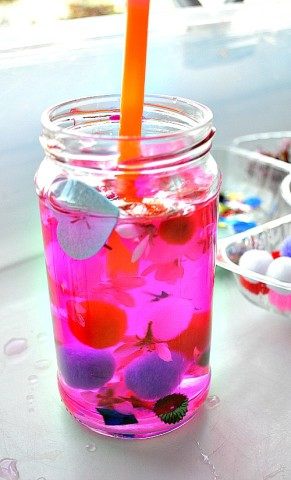
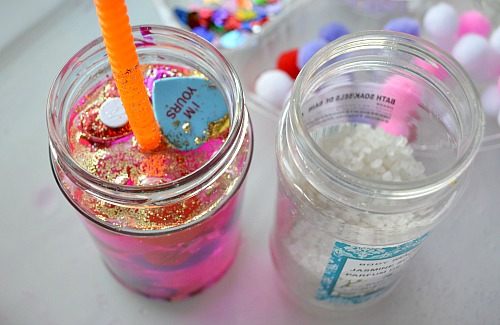

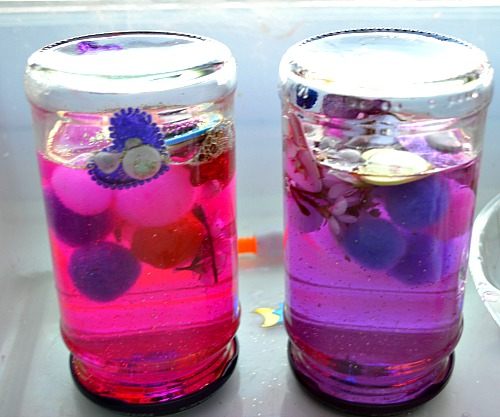

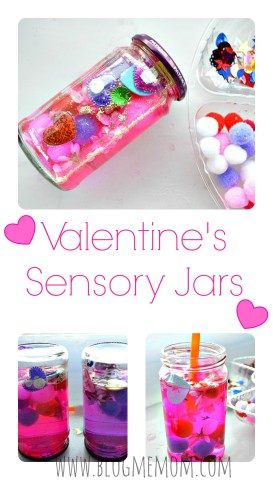



There are beautiful!
We made them but all our glitter, beads, and sequins clumped up at the bottom, do you know what caused that to happen?
the pompoms and foam stickers are at the top.
Cute idea none the less, a big hit! Loved it!
Hi Logan, thanks for reading. The foam stickers and pom poms being very light tend to float. Heavier objects like beads and sequins will sink to the bottom of the water. If you are working with older kids, you can make this into a float or sink science experiment and delve into Archimedes’ Principle. I bet even school-age kids would enjoy making and playing with these.
Just curious – what’s the point of the bath salts?
The whole sensory activity is very process oriented – the children choose what they want to add in their “concoction”..